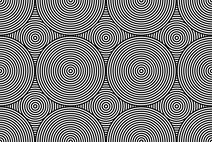 Freud’s initial psychotherapeutic practice involved the use of Hypnosis. No doubt this influenced his thoughts on the development of his theories regarding unconscious and conscious processing. Much has changed in our understanding of the control mechanisms involved with control of our attention since the start of the 20th Century. Cognitive models of how suggestion, imagination and metaphor may produce their effects in the entertainment and clinical realms of practice have been developed. A range of scales have been developed to better understand the sensitivity of people to suggestion which may have some clinical correlates. However, clinical hypnosis has been used successfully to alter perceptions, attitudes and behaviours related to specific outcomes. This is a communication skill which supports the “client” with approaches to cope, develop resilience, re-frame events and change perspectives in addition to general changes in wellbeing. These interventions do not require a high level of susceptibility on the part of the client. Use of stories, metaphors and analogies re-sets on our normal cognitive function in a more useful way. In this regard, hypnosis is a self-directed approach that is catalysed by the skill of the practitioner to develop a strong sense of rapport and empathy to support different ways of thinking to improve health and wellbeing. This understanding of hypnosis fits very well with the definition provided by the Complementary and Natural Healthcare Council (CNHC), where hypnotherapy is described as an approach that uses a person’s imagination to elicit change in thoughts, perceptions, sensations and behaviours. At Reciprocal Minds we believe that the power of imagination and the use of symbols or metaphors can be an effective way to adapt to change and an important skill for personal health and wellness. These are powerful communication tools that you can use yourself, be explored in conversation and used in meditative states. Sources Andrews, W.P., Parsons, A.A., Rawle, H. and Gibbs, J. (2015), Mental Health Review Journal, Vol. 20(3),199-210. https://doi.org/10.1108/MHRJ-08-2014-0030 Carlyle, A.V., Ching, P.C. & Cyna, A.M. (2008). Anaesth Intensive Care 36, 180-184 Cock, H. & Edwards, M.J. (2018). Clinical Medicine 18(5), 414-417 Complementary and Natural Healthcare Council https://www.cnhc.org.uk Cyna, A.M. (2019). Int J. Clinical and Exp Hypnosis 67(3). https://doi.org/10.1080/00207144.2019.1612669 Dienes, Z. & Perner, J. (2007) Executive control without conscious awareness: the cold control theory of hypnosis. In, G.A. Jamieson (ed). Hypnosis and Conscious States: The cognitive neuroscience perspective. Oxford University Press, Oxford UK Dutt-Gupta, J., Bown, T. & Cyna, A.M. (2007). Br. J. Anaesthesia 99(6), 871-875. Lush, P., Naish, P. & Dienes, Z. (2016). Neuroscience of Consciousness 1, 1-10. https://doi.com/doi: 10.1093/nc/niw007 Terhune, D.B., Cleermans, A., Raz, A. & Lynn, S.J. (2017), Neuroscience & Biobehavioural Reviews 81, 59-74.
0 Comments
|
|
Reciprocal Minds Limited
2 Falcon Gate, Shire Park, Welwyn Garden City. AL7 1TW andrew.parsons@reciprocalminds.ltd |
Registered in England and Wales. Company Number 8175774. |
Follow us:
|


 RSS Feed
RSS Feed

